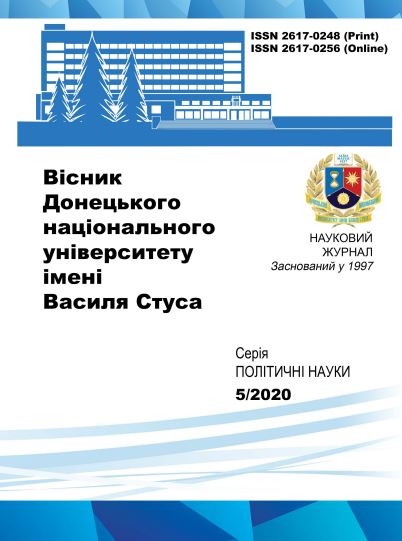The Evolution of USA Policy on Korea
DOI:
https://doi.org/10.31558/2617-0248.2020.5.6Keywords:
Korean problem; denuclearization; stability; peace; North Korea's missile and nuclear program; the great powersAbstract
The work notes that many researchers highlight the special role of the United States in solving of the Korean problem and maintaining security in Northeast Asia. The US Government's approaches
of different periods of resolving the problem in the Korean Peninsula are set out in detail. Although the United States is far from the Korean Peninsula, due to geopolitical factors, Korea has always been in the US national interest. It is known that the United States was one of the the perpetrators and initiators of the Korean Peninsula split and never lost sight of the Korean Peninsula after 1945.
Depending on the political and economic situation in the world, the US government has applied different types of doctrines, strategies, and approaches, such as the Guam and Pacific doctrines. Despite all the changes in the international political world, the US has always paid attention to the security of South Korea, as it did in the Korean War of 1950-53. In order to protect the Republic of Korea and strengthen its influence in Northeast Asia, the United States continues to maintain a contingent of troops in Korea today, providing tremendous assistance in rebuilding the Republic of Korea's economy and modernizing the South Korean army. So, from 1945 to 1975 the United States spent about $ 13 billion on economic and military goals and spent about $ 4 billion in the 1970s.
Of course, many US presidents have made great efforts at various times to build peace and resolve the conflicts of various levels that have occurred periodically on the Korean Peninsula. President Carter continued to withdraw US troops from South Korea for 4-5 years, but when the Reagan administration came to power, the issue of withdrawing the US contingent was removed from the agenda. The motive for preserving US troops was to gain time to strengthen South Korea's military power.
Many researchers, such as E. Reishauer and G. Henderson, emphasize that a devided Korean Peninsula is a destabilizing factor in Northeast Asia and the presence of US troops in South Korea is a major obstacle to unification of Korea. Today, given the fact that a contingent of US troops is still present in Korea, we can draw some conclusions to what America wants: a unification of Korea or not? Many scientists find it paradoxical that South Korea has significant economic advantages and a fairly strong army, but still retains US troops in its home country. Is this fear of North Korea or unwillingness to upset the US ally? Despite changes in relations of US-DPRK and RK-DPRK, the USA and the Republic of Korea continue to conduct large-scale military exercises, thereby provoking the DPRK's participation in military exercises with China and Russia, prompting North Korea to resume missile tests. After Donald Trump came to power, which began to apply protectionist policies, things have changed a bit, but South Korea has still allowed the United States to deploy THAAD missile systems in Korea, thereby sharply deteriorating relations with China.
It is also known that the confrontation between the US and China has intensified today. This fact certainly affects the process of settling the Korean problem. In the current situation, the role of China and the Republic of Korea as a mediator and catalyst for intensified continuation of the negotiations on peacekeeping and stabilization on the Korean peninsula started in 2018 has sharply increased.
References
Shneider P. L. Prospects for Korean Security// Asian Security in the 1980s. Problems and Policies for a Time of Transition. – Cambridge, 1980, p. 138–139.
Solomon R. H. Asian security in the 1980s: Problems and policies for a time of transition, Oelgeschlager, Gunn & Hain, 1980, 324 p.
International Relations. Theory and the Asia – Pacific/ G. John, I. Kenberry, M. Mastanduno (eds.) – New York: Columbia University press, 2003, p.8
Scarlapino R., Lee Chong Sik. Communism in Korea. – Berkeley: University of California press, 1972,
p.
Ahu Pyong Joon. Triangle: Japan – China – USSR and Korea – Soviet policy in Asia: Expansioner Accomodation – Seoul. 1980.
Зaявлeниe прeдcтaвитeля МИД КНДР // ЦТAК, 13 мaртa 2002 г.
홍민, 신냉전 기회 삼아, 안전 보장 모색하는 북한, 통일 시대, Vol. 156, 2019, #10, p. 27

